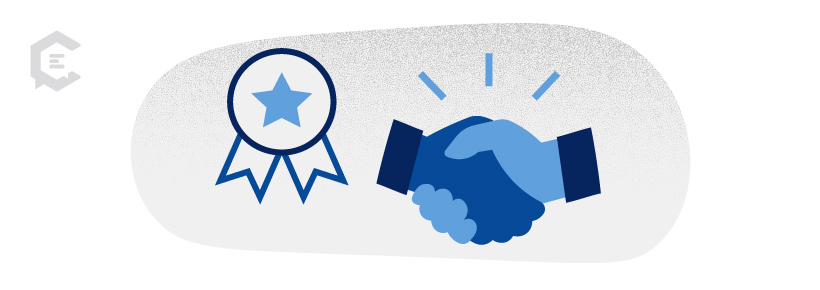“Build it, and they will come” is a line we hear so often, and marketers know just how flawed that is. Take, for example, the movie John Carter. Despite its high production value and the fact that it’s based on a popular series, it bombed at the box office. Observers point to several reasons, and one of them is weak marketing.
You can build something magnificent from the ground up, but if your target audience doesn’t know your masterpiece exists, chances are your hard work will stay confined to just a few people. The same is true for content creation — you can spend several hours creating great content, but if your distribution strategy falls short, your content’s reach and impact will also fall short.
Content distribution is a core component but often an underutilized aspect of content marketing. In this guide, we’ll explore how strategic content partnerships can amplify your results.
The Strategic Value of Content Partnerships
Spotify and Uber. GoPro and Red Bull. Marvel and Fortnite.
These are just a few examples of well-known content partnerships of the last decade.
In 2014, Spotify and Uber launched a car music playlist partnership that enabled Spotify premium users to listen to their very own Spotify playlists in participating Uber vehicles. GoPro and Red Bull, meanwhile, forged a deal in 2016 that made GoPro the exclusive action camera for Red Bull’s events and productions. In 2019, Fortnite and Marvel offered “Endgame,” a limited-time game mode as Avengers: Endgame made its way into theaters.
We won’t delve into the specifics of each collaboration, but it’s safe to say that these resulted in mutually beneficial outcomes, including:
- Amplified reach and visibility: Brands can tap into each other’s audiences, introducing their content to new markets.
- Enhanced brand credibility: Association with established brands enhances the credibility of your own brand. When reputable brands endorse your content, their audiences will likely view your brand favorably.
- Improved content marketing ROI: Content collaboration can be more cost-effective than traditional advertising. Sharing resources with a partner (or group of partners) to develop and distribute content allows for a higher return on investment.
- Innovation and creativity: Collaborating with partners can spark creative content ideas that may not have been considered in-house.
- Diverse content formats: Different audiences have different content preferences. Partnerships can allow brands to explore various content formats, such as podcasts, videos, webinars, and co-written articles, which can significantly increase audience engagement.
- Cross-promotion: Cross-promotion across multiple channels, including email newsletters, social media, and blogs, is a typical component of content partnerships. It maximizes the visibility of shared content.
- More effective SEO: Sharing content across platforms and getting backlinks from authority sites can help boost SEO efforts. This, in turn, drives organic traffic to your website.
What to Look for in a Potential Content Partner
Finding the right content partner requires careful thought and planning. Partner with the wrong brand, and you may tarnish your brand’s image by association. To find the most beneficial collaborations, consider the following criteria for selection:
- Audience alignment: Your audiences should complement each other. This way, you reach people who are genuinely interested in your content and vice versa. One example is Gymshark, a fitness apparel brand, collaborating with Whitney Simmons, a well-known health and wellness influencer. The audiences may differ to some degree, but they are aligned with one another.
- Brand compatibility: Choose a partner whose image and brand values align with yours. This maintains messaging consistency and avoids potential conflicts that could damage your reputation. An example is National Geographic partnering with environmentalists to create and promote content that highlights environmental issues.
- Content quality and relevance: Your partner should regularly produce content that meets your quality standards and covers topics relevant to your audience. For example, Runkeeper, an app that tracks runs and training goals, and MyFitnessPal, a diet and calorie intake tracker, collaborate on content for their blogs and social media channels to provide tips on diet, exercise, and achieving fitness goals.
- Engagement levels: More followers doesn’t equal higher engagement. But rather, find a partner with a more responsive audience. An example is beauty brand Glossier partnering with Olivia Rodrigo in 2021. At the time, Rodrigo was a relatively new artist with a dedicated fanbase.
- Marketing and distribution capabilities: Take a look at a potential partner’s content distribution and marketing capabilities. Can they effectively promote and share content? One example is the viral collab between Heinz and Absolut Vodka, which brought to life a limited-edition pasta sauce inspired by a TikTok trend. Heinz’s partner agency used out-of-home advertising and social media campaigns targeting big influencers to generate awareness for the new product.
- Collaborative creativity: Look for creative partnerships that bring out the best in both brands. These enable partners to generate new content or marketing strategies that neither partner could have developed as effectively on their own. One example is the now-classic “Puppyhood,” a YouTube video created by Buzzfeed in partnership with Purina.
How to Find Content Partnership Opportunities
Now that you know what to look for in a potential partner, how and where do you find them?
Various tools and platforms are available to streamline the process. Here are just a few:
- Social media platforms: Search relevant hashtags, follow industry leaders, and use social media listening tools.
- Industry blogs, websites, and publications: Compile a list of influential blogs, websites, and publications within your industry. Use relevant search engine keywords to find curated lists and rankings.
- Networking events, conferences, webinars, and associations: Attend industry-specific events, conferences, or webinars to meet potential partners. Different professional and trade associations can facilitate connections between professionals and companies interested in content collaborations.
- Competitor analysis: Find out which brands or personalities are partnering with your competitors. You can do this by analyzing their websites for sections highlighting partnerships, checking their social media accounts for any mention of partners, searching press releases, gathering insights from peers and industry insiders, and so on.
- Affiliate networks: Because affiliate networks connect content creators and businesses across industries and niches, they can help you identify potential affiliates already promoting products or services in your industry.
- Forums and online communities: Participate in industry forums, Facebook groups, Reddit, and other online communities to identify potential partners. Doing so also broadens your understanding of the latest trends in your industry.
Maximizing Content Partnerships: Best Practices
As with any partnership, forging one is just the beginning. To get the most value out of content collaborations, here are some tips:
- Keep communication lines open: If anything can make or break a partnership, it’s communication. By establishing a framework for regular updates and feedback — such as a monthly video call to address challenges, discuss new opportunities, or share success — all parties stay aligned with the partnership’s objectives.
- Set up regular strategy sessions or review meetings: These sessions and meetings, such as quarterly reviews or annual planning sessions, allow partners to evaluate what’s working and what needs improvement.
- Share insights and data: Insights into audience behavior, engagement, and audience behavior can help partners refine their content distribution strategies for maximum results.
- Co-create and co-promote content: You’ll have new opportunities for co-creation. Partners can collaborate on content pieces, events, or webinars that leverage their strengths. Not only can these provide fresh content for audiences, but they can also foster a sense of community around shared goals and interests.
- Celebrate shared successes: One surefire way to strengthen morale and foster a positive partnership is to recognize milestones and achievements, whether it’s a successful co-branded launch, a partnership anniversary, or reaching a specific number of views. You can celebrate successes in various ways, such as via a blog post, a joint press conference, or anniversary specials and promotions.
Leveraging Partnerships for Successful Content Marketing
You know that old adage about two heads? We know, we know. It still remains true, though, doesn’t it? Content partnerships can do a lot for your brand — amplify reach, increase the overall effectiveness of your content, and even open the gates to new, lucrative markets. And that all starts with finding the right partner.
Need help creating content that resonates? Connect with an expert content strategist at ClearVoice today.







